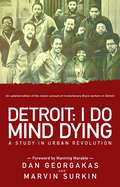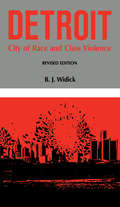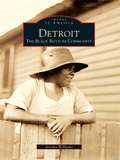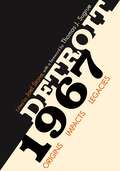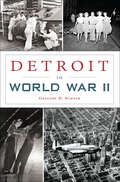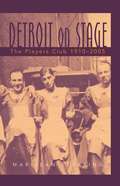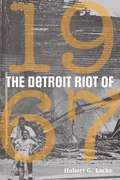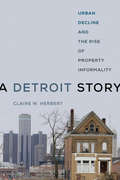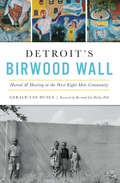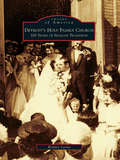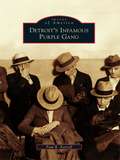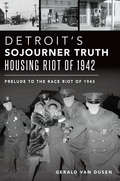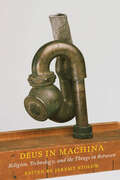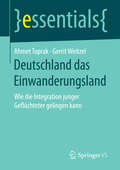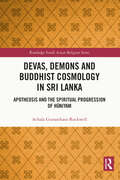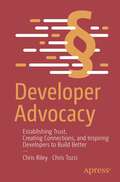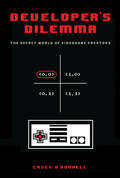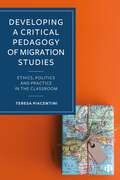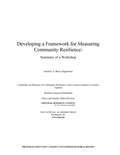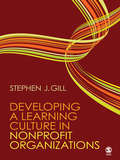- Table View
- List View
Detroit: A Study in Urban Revolution
by Marvin Surkin Dan GeorgakasDetroit: I Do Mind Dying tracks the extraordinary development of the Dodge Revolutionary Union Movement and the League of Revolutionary Black Workers as they became two of the landmark political organizations of the 1960s and 1970s. It is widely heralded as one the most important books on the black liberation movement. Marvin Surkin received his PhD in political science from New York University and is a specialist in comparative urban politics and social change. He worked at the center of the League of Revolutionary Black Workers in Detroit. Dan Georgakas is a writer, historian, and activist with a long-time interest in social movements. He is the author of My Detroit, Growing up Greek and American in Motor City.
Detroit: City of Race and Class Violence, Revised Edition
by B. J. WidickThis revised edition charts Detroit's bitter history of race and class violence, and its particular effect on the city today.
Detroit: The Black Bottom Community (Images of America)
by Jeremy WilliamsBetween 1914 and 1951, Black Bottom's black community emerged out of the need for black migrants to find a place for themselves. Because of the stringent racism and discrimination in housing, blacks migrating from the South seeking employment in Detroit's burgeoning industrial metropolis were forced to live in this former European immigrant community. During World War I through World War II, Black Bottom became a social, cultural, and economic center of struggle and triumph, as well as a testament to the tradition of black self-help and community-building strategies that have been the benchmark of black struggle. Black Bottom also had its troubles and woes. However, it would be these types of challenges confronting Black Bottom residents that would become part of the cohesive element that turned Black Bottom into a strong and viable community.
Detroit 1967: Origins, Impacts, Legacies (Painted Turtle)
by Thomas J. Sugrue Joel StoneIn the summer of 1967, Detroit experienced one of the worst racially charged civil disturbances in United States history. Years of frustration generated by entrenched and institutionalized racism boiled over late on a hot July night. In an event that has been called a “riot,” “rebellion,” “uprising,” and “insurrection,” thousands of African Americans took to the street for several days of looting, arson, and gunfire. Law enforcement was overwhelmed, and it wasn’t until battle-tested federal troops arrived that the city returned to some semblance of normalcy. Fifty years later, native Detroiters cite this event as pivotal in the city’s history, yet few completely understand what happened, why it happened, or how it continues to affect the city today. Discussions of the events are often rife with misinformation and myths, and seldom take place across racial lines. It is editor Joel Stone’s intention with Detroit 1967: Origins, Impacts, Legacies to draw memories, facts, and analysis together to create a broader context for these conversations. In order to tell a more complete story, Detroit 1967 starts at the beginning with colonial slavery along the Detroit River and culminates with an examination of the state of race relations today and suggestions for the future. Readers are led down a timeline that features chapters discussing the critical role that unfree people played in establishing Detroit, the path that postwar manufacturers within the city were taking to the suburbs and eventually to other states, as well as the widely held untruth that all white people wanted to abandon Detroit after 1967. Twenty contributors, from journalists like Tim Kiska, Bill McGraw, and Desiree Cooper to historians like DeWitt S. Dykes, Danielle L. McGuire, and Kevin Boyle, have individually created a rich body of work on Detroit and race, that is compiled here in a well-rounded, accessible volume. Detroit 1967 aims to correct fallacies surrounding the events that took place and led up to the summer of 1967 in Detroit, and to encourage informed discussion around this topic. Readers of Detroit history and urban studies will be drawn to and enlightened by these powerful essays.
Detroit in World War II
by Gregory D. SumnerA history of everyday life in the Motor City during the Second World War and the contributions its citizens made to the war effort. When President Roosevelt called for the country to be the great &“Arsenal of Democracy,&” Detroit helped turn the tide against fascism with its industrial might. Locals were committed to the cause, putting careers and personal ambitions on hold. Factories were retooled from the ground up. Industrialist Henry Ford, First Lady Eleanor Roosevelt, aviator Charles Lindbergh, legendary boxer Joe Louis, future baseball Hall of Famer Hank Greenberg and the real-life Rosie the Riveters all helped drive the city that was &“forging thunderbolts&” for the front lines. With a panoramic narrative, author Gregory D. Sumner chronicles the wartime sacrifices, contributions and everyday life of the Motor City.
Detroit on Stage: The Players Club, 1910-2005 (Great Lakes Books Series)
by Marijean LeveringFounded in 1910, Detroit’s Players Club is an all-male club devoted to the production of theater by members for other members’ enjoyment. Called simply "The Players," members of the club design, direct, and act in the shows, including playing the female roles. In Detroit on Stage, Marijean Levering takes readers behind the scenes of the club’s private "frolics" to explore the unique history of The Players, discover what traditions they still hold dear, and examine why they have survived relatively unscathed through changes that have shuttered older and more venerable institutions. The Players developed during a nationwide vogue for community and art theater and also as Detroit’s auto elites were in the midst of forming new private clubs to add to their own sense of prestige. By the 1920s, The Players had built their own playhouse and established most of their significant traditions, including the monthly frolics, at which the members perform for each other. At the frolics, members in the audience would wear tuxedos and drink beer out of personalized mugs, customs that remain to this day. Prominent Detroiters have always been among the ranks of the Players, and several well-known auto industry figures were members from the beginning, including banker Henry B. Joy, Oldsmobile sales manager Roy D. Chapin, and Ford executives James Couzens and Edsel Ford. Over the decades that followed the club’s founding, its membership and traditions have remained strong despite major world events that shook Detroit such as Prohibition, the Great Depression, and World War II. In looking at The Players of today, Levering explores the camaraderie and sense of history that has kept the club together and relatively unchanged throughout the years. She also examines the club’s notable members and its unique place in Detroit history. Detroit on Stage places The Players club in the broader contexts of social clubs, explaining how these organizations originate and function. Readers interested in Detroit cultural history and theater studies will enjoy this rare glimpse inside a long-standing Detroit cultural institution.
The Detroit Riot of 1967
by Hubert G. LockeDuring the last days of July 1967, Detroit experienced a week of devastating urban collapse—one of the worst civil disorders in twentieth-century America. Forty-three people were killed, over $50 million in property was destroyed, and the city itself was left in a state of panic and confusion, the scars of which are still present today. Now for the first time in paperback and with a new reflective essay that examines the events a half-century later, The Detroit Riot of 1967 (originally published in 1969) is the story of that terrible experience as told from the perspective of Hubert G. Locke, then administrative aide to Detroit’s police commissioner. The book covers the week between the riot’s outbreak and the aftermath thereof. An hour-by-hour account is given of the looting, arson, and sniping, as well as the problems faced by the police, National Guard, and federal troops who struggled to restore order. Locke goes on to address the situation as outlined by the courts, and the response of the community—including the media, social and religious agencies, and civic and political leadership. Finally, Locke looks at the attempt of white leadership to forge a new alliance with a rising, militant black population; the shifts in political perspectives within the black community itself; and the growing polarization of black and white sentiment in a city that had previously received national recognition as a “model community in race relations.” The Detroit Riot of 1967 explores many of the critical questions that confront contemporary urban America and offers observations on the problems of the police system and substantive suggestions on redefining urban law enforcement in American society. Locke argues that Detroit, and every other city in America, is in a race with time—and thus far losing the battle. It has been fifty years since the riot and federal policies are needed now more than ever that will help to protect the future of urban America. All historians, from professional to novice, will find value in this compelling account of a marked moment in American history.
A Detroit Story: Urban Decline and the Rise of Property Informality
by Claire W. HerbertBringing to the fore a wealth of original research, A Detroit Story examines how the informal reclamation of abandoned property has been shaping Detroit for decades. Claire Herbert lived in the city for almost five years to get a ground-view sense of how this process molds urban areas. She participated in community meetings and tax foreclosure protests, interviewed various groups, followed scrappers through abandoned buildings, and visited squatted houses and gardens. Herbert found that new residents with more privilege often have their back-to-the-earth practices formalized by local policies, whereas longtime, more disempowered residents, usually representing communities of color, have their practices labeled as illegal and illegitimate. She teases out how these divergent treatments reproduce long-standing inequalities in race, class, and property ownership.
Detroit's Birwood Wall: Hatred & Healing in the West Eight Mile Community
by Gerald Van DusenIn 1941, a real estate developer in northwest Detroit faced a dilemma. He needed federal financing for white clients purchasing lots in a new subdivision abutting a community of mostly African Americans. When the banks deemed the development too risky because of potential racial tension, the developer proposed a novel solution. He built a six-foot-tall, one-foot-thick concrete barrier extending from Eight Mile Road south for three city blocks--the infamous Birwood Wall. It changed life in West Eight Mile forever. Gathering personal interviews, family histories, land records and other archival sources, author Gerald Van Dusen tells the story of this isolated black enclave that persevered through all manner of racial barriers and transformed a symbol of discrimination into an expression of hope and perseverance.
Detroit's Holy Family Church: 100 Years of Sicilian Tradition (Images of America)
by Bonnie LeoneA treasury of photos and stories celebrating this historic landmark and Detroit&’s Italian-American community. The traditions of the Sicilians and Italians have been a part of Detroit since the early 1900s, and Holy Family Church represents the very root of this community&’s soul, maintaining the culture and the rituals their ancestors brought with them to America over a century ago. Some of these customs date back hundreds of years in their homelands of Cinisi, Terrasini, Trapani, and many other cities. Bonnie Leone was born, raised, and still resides in Detroit. Originally appointed by Gov. John Engler to the position of Wayne County jury commissioner, Leone is a member of several genealogical societies, tracing some of her ancestors as far back as the 1500s. Her strong sense of history, art, and tradition brought her to this church, so that she may help to preserve and protect the traditions of the Sicilians in Detroit—and in this richly illustrated book, she shares its story.
Detroit's Infamous Purple Gang (Images of America)
by Paul R. KavieffDetroit's Infamous Purple Gang is a photographic history of one of the most notorious organized crime groups of the 20th century. The photographs chronologically follow the evolution of the Purples from their days as a juvenile street gang through their rise to power and eventual self-destruction. Using rare police department mug shots and group photographs, the book transports readers through the dark side of Prohibition-era Detroit history. Detroit had a gold rush atmosphere and a thriving black market during the 1920s that attracted gangsters and unsavory characters from all over the country.
Detroit’s Sojourner Truth Housing Riot of 1942: Prelude to the Race Riot of 1943 (American Heritage)
by Gerald Van DusenDuring World War II, no American city suffered a worse housing shortage than Detroit, and no one suffered that shortage more than the city's African American citizens. In 1941, the federal government began constructing the Sojourner Truth Housing Project in northeast Detroit to house 200 black war production workers and their families. Almost immediately, whites in the neighborhood vehemently protested. On February 28, 1942, a confrontation between black tenants and white protesters erupted in a riot that sent at least 40 to the hospital and more than 220 to jail. This confrontation was the precursor to the bloodiest race riot of the war just sixteen months later. Gerald Van Dusen, author of Detroit's Birwood Wall, unfolds the background and events of this overlooked moment in Motor City history.
Deus in Machina: Religion, Technology, and the Things in Between
by Jeremy StolowThe essays in this volume explore how two domains of human experience and action—religion and technology—are implicated in each other. Contrary to commonsense understandings of both religion (as an “otherworldly” orientation) and technology (as the name for tools, techniques, and expert knowledges oriented to “this” world), the contributors to this volume challenge the grounds on which this division has been erected in the first place.What sorts of things come to light when one allows religion and technology to mingle freely? In an effort to answer that question, Deus in Machina embarks upon an interdisciplinary voyage across diverse traditions and contexts where religion and technology meet: from the design of clocks in medieval Christian Europe, to the healing power of prayer in premodern Buddhist Japan, to 19th-century Spiritualist devices for communicating with the dead, to Islamic debates about kidney dialysis in contemporary Egypt, to the work of disability activists using documentary film to reimagine Jewish kinship, to the representation of Haitian Vodou on the Internet, among other case studies.Combining rich historical and ethnographic detail with extended theoretical reflection, Deus in Machina outlines new directions for the study of religion and/as technology that will resonate across the human sciences, including religious studies, science and technology studies, communication studies, history, anthropology, and philosophy.
Deutsch-jüdische Begegnungen mit dem Buddhismus: Zwischen Moses und Buddha, 1890-1940
by Sebastian MuschIn Deutschland verwandelte sich der Buddhismus um die Jahrhundertwende von einem obskuren Thema, das nur für einige wenige Gelehrte von Interesse war, in ein kulturelles Phänomen. Viele der bedeutendsten Autoren dieser Zeit wurden von diesem rasanten Aufstieg des Buddhismus tiefgreifend beeinflusst - unter ihnen einige der bekanntesten Namen des deutsch-jüdischen Kanons. Sebastian Musch gräbt diese vernachlässigte Dimension deutsch-jüdischer Identität aus und zeichnet anhand von philosophischen Abhandlungen, Romanen, Essays, Tagebüchern und Briefen die Geschichte der jüdisch-buddhistischen Begegnungen bis zum Beginn des Zweiten Weltkriegs nach. Franz Rosenzweig, Martin Buber, Leo Baeck, Theodor Lessing, Jakob Wassermann, Walter Hasenclever und Lion Feuchtwanger werden neben anderen, weniger bekannten Persönlichkeiten wie Paul Cohen-Portheim und Walter Tausk vorgestellt. Wie Musch zeigt, verhandelten diese Denker, als sie über den Buddhismus schrieben, auch ihr eigenes Jüdischsein.
Deutsche Entwicklungszusammenarbeit im Spannungsfeld der Außen- und Sicherheitspolitik: Frieden - Sicherheit - Entwicklung ((Re-)konstruktionen - Internationale und Globale Studien)
by Wolfgang Gieler Meik NowakSpätestens seit der ausgerufenen „Zeitenwende“ muss Sicherheitspolitik nicht nur neu, sondern auch anders gedacht werden. Der Dreiklang von Sicherheit, die Frieden schafft und Entwicklung ermöglicht, ist nicht mehr im Sinne von humanitären Interventionen zu denken, sondern in einem unübersichtlichen und mannigfaltigen politischen Umfeld neu zu verorten. Dieses Buch leistet einen Diskussionsbeitrag zu den Herausforderungen, Zielen und Konflikten in diesen interdependenten Politikfeldern. Die unterschiedlichen Perspektiven aus Sicht der Friedens-, Sicherheits- und Entwicklungspolitik werden durch Fallbeispiele illustriert.
Deutsche Kino-Wochenschau und der wirtschaftliche Aufschwung in West und Ost: Audiovisuelle Gestaltung und Vermittlungsstrategie in Fallanalysen (1950-1965)
by Sigrun LehnertIn der Zeit des wirtschaftlichen Aufschwungs Deutschlands nach dem Zweiten Weltkrieg waren die Wochenschauen im Vorprogramm jeder Kinovorstellung eine bedeutende Informationsquelle. Mit eindrucksvollen Bildern auf einer großen Leinwand – begleitet von gesprochenem Kommentar, Musik und Geräusch – gaben sie Orientierung und prägten die Erinnerung. In zahlreichen dokumentarischen Film- und Fernsehformaten werden bis heute einzelne Bilder oder kurze Sequenzen aus der Kino-Wochenschau als historische Belege, als Illustrationen oder zur Dramatisierung verwendet. Die außergewöhnlichen Prinzipien der Informationsvermittlung kommen dabei jedoch nicht mehr zur Geltung. Um das Publikum zu erreichen, war damals eine Mischung aus informativen Berichten und unterhaltenden Beiträgen unerlässlich. Die in diesem Buch vorgenommenen Fallanalysen spiegeln elementare Themenbereiche der Zeit des wirtschaftlichen Aufschwungs beider deutscher Staaten (1950-1965) wider. Neben den Prinzipien der audiovisuellen Gestaltung wird auch die zentrale Vermittlungsstrategie herausgearbeitet. Transmediale und transnationale Aspekte, die hierbei eine Rolle spielen, weisen die Wochenschau als Teil eines (internationalen) Mediensystems aus.
Deutschland als Magnet für Hochqualifizierte aus Griechenland: Eine qualitative empirische Studie zu faktischen und potenziellen Migrant*innen (Interkulturelle Studien)
by Andreas GkolfinopoulosEine der vielfältigen Konsequenzen des Ausbruchs der Finanzkrise 2009 in Griechenland ist die Auswanderung von Hochqualifizierten. Ab dieser Zeit scheint Deutschland im Kontext der EU-Freizügigkeit zu einem Magneten für die Hochqualifizierten aus Griechenland geworden zu sein. Die vorliegende Studie, die sich in der sozialwissenschaftlichen empirischen Migrationsforschung verorten lässt, legt den Fokus auf diese EU-Zuwanderung, um die Beweggründe und die Migrationsmotive dieser Hochqualifizierten zu untersuchen. Unter Einnahme einer vergleichenden Perspektive stehen drei verschiedene Berufsgruppen im Mittelpunkt: IT-Expert*innen, Ärzt*innnen, die eine Fachärzt*inausbildung absolvieren bzw. absolvieren möchten, und Nachwuchswissenschaftler*innen in den Geisteswissenschaften. Da allerdings nicht alle Hochqualifizierten aus Griechenland migrieren, wird auch in Anlehnung an den Begriff Stasis der Frage nachgegangen, was potenzielle Migrant*innen in Griechenland dazu veranlasst, dort zu verbleiben und nicht zu migrieren. Darüber hinaus werden im Zusammenhang mit dem Brain-Drain weitere Aspekte beleuchtet, darunter die subjektive (moralische) Wahrnehmung dieses Phänomens und die folgenden Herausforderungen für beide Länder.
Deutschland das Einwanderungsland: Wie die Integration junger Geflüchteter gelingen kann (essentials)
by Ahmet Toprak Gerrit WeitzelDieses essential befasst sich mit der Situation junger Gefl#65533;chteter in der Bundesrepublik Deutschland. Neben den Gr#65533;nden, warum Menschen fliehen und ihre Heimat verlassen, stehen im Zentrum dieses essentials die Fragen, was Integration politisch und gesellschaftlich im Kontext der Arbeitsmigration bedeutet hat, was Integration im wissenschaftlichen und im praktischen Sinne bedeutet und wie daraus ableitend die Integration der jungen Gefl#65533;chteten anno 2016 gelingen kann.
Deutschland und Europa im Umbruch: Einstellungen, Verhalten und Forschungsperspektiven im Kontext der Bundestagswahl 2017 und der Europawahl 2019 (Wahlen und politische Einstellungen)
by Kathrin Ackermann Heiko Giebler Martin ElffUmbrüche und Krisen führen zu drastischen Veränderungen und bedingen Wandel – nicht zuletzt mit Blick auf politische Einstellungen und politisches Verhalten sowie den politischen Wettbewerb. Mit einem Schwerpunkt auf die Bundestagswahl 2017 und die Europawahl 2019 analysieren die Beiträge in diesem Band das Wahlverhalten in Deutschland und Europa vor dem Hintergrund dieser politischen und gesellschaftlichen Veränderungen.
Devas, Demons and Buddhist Cosmology in Sri Lanka: Apotheosis and the Spiritual Progression of Hūniyam (Routledge South Asian Religion Series)
by Achala Gunasekara-RockwellThis book examines the worship of devas and demons in Sri Lanka, illustrating how diverse influences interacted to create the Sinhala Buddhist cosmology. The work explains the processes by which apotheosis plays an important role in revitalizing that cosmology. The author offers an examination of holy sites associated with the worship of Hūniyam. These sacred spaces each have a unique background historically, and the ritualists associated with these sites have divergent understandings concerning Hūniyam. Building upon the examination of the temples, the book delves into the iconography of Hūniyam, illustrating his transformation from demon to deity in the manner that he is depicted in imagery associated with his worship. The book moves to a discussion of Ariṭṭa Kivenḍu Perumāl, a South Indian adventurer, demonstrating the likelihood that he is the historical figure later apotheosized as Hūniyam. Sri Lankan society felt his impact so strongly, that in death he became a demon in the Sinhala Buddhist cosmology. Finally, the book demonstrates that the same apotheosis processes are at work today. This book will be of interest to researchers and students engaged in the study of religion, anthropology, folklore, and history, specifically in the South Asian context.
Developer Advocacy: Establishing Trust, Creating Connections, and Inspiring Developers to Build Better
by Chris Riley Chris TozziNo matter which point you're currently at on the developer advocacy journey – whether you've already implemented a developer advocate function or you're exploring the possibility – this book is for you. This book provides actionable guidance that business and technology leaders can use to understand the benefits of advocacy, identify what goes into the function, and learn how to maximize the success of developer advocate teams.Developer advocacy is a role that is sometimes hard to quantify and build – but you feel it when you’re missing it. Companies are struggling to solidify advocacy despite a strong desire to do so and little guidance exists for businesses seeking to build a developer advocacy program or assess its effectiveness. This book will show you how to get an advocacy program in your business: the basics of having an advocacy program, what tasks and processes need to be set up, and how to identify key stakeholders. You'll see how companies of all types that sell to or engage with technical audiences can develop a developer advocacy strategy. Specifically, you'll learn what developer advocates do, how business can start an advocacy practice in your organization and how to scale and operationalize such a practice once it is in place. The book will further explore the metrics for measuring advocacy success and ways the scale advocacy teams internally and externally. The Power of Developer Advocacy explores the exciting career path of advocacy for developers and engineers. What You Will LearnDiscover what developer advocacy isDetermine which sorts of companies need the functionUnderstand what the primary strategic considerations for developer advocacy isWho This Book is For Existing and future advocacy leaders, would-be developer advocates, developer marketers and DevRel teams and leaders
Developer's Dilemma: The Secret World of Videogame Creators (Inside Technology)
by Casey O'DonnellAn examination of work, the organization of work, and the market forces that surround it, through the lens of the collaborative practice of game development.Rank-and-file game developers bring videogames from concept to product, and yet their work is almost invisible, hidden behind the famous names of publishers, executives, or console manufacturers. In this book, Casey O'Donnell examines the creative collaborative practice of typical game developers. His investigation of why game developers work the way they do sheds light on our understanding of work, the organization of work, and the market forces that shape (and are shaped by) media industries. O'Donnell shows that the ability to play with the underlying systems—technical, conceptual, and social—is at the core of creative and collaborative practice, which is central to the New Economy. When access to underlying systems is undermined, so too is creative collaborative process. Drawing on extensive fieldwork in game studios in the United States and India, O'Donnell stakes out new territory empirically, conceptually, and methodologically. Mimicking the structure of videogames, the book is divided into worlds, within which are levels; and each world ends with a boss fight, a “rant” about lessons learned and tools mastered. O'Donnell describes the process of videogame development from pre-production through production, considering such aspects as experimental systems, “socially mandatory” overtime, and the perpetual startup machine that exhausts young, initially enthusiastic workers. He links work practice to broader systems of publishing, manufacturing, and distribution; introduces the concept of a privileged “actor-intra-internetwork”; and describes patent and copyright enforcement by industry and the state.
Developing a Critical Pedagogy of Migration Studies: Ethics, Politics and Practice in the Classroom
by Teresa PiacentiniMigration as a taught subject is entrenched in social and political debates, with the classroom firmly framed as a site of committed social and political encounter. That means teaching migration through the prism of critical pedagogy is a political and ethical necessity. This book invites readers to examine their own relationships with migration, ethics, politics and power. It encourages teachers, students and practitioners to think critically about their position in relation to the knowledge they both bring and gain. With pedagogical features that provide space for reflection and discussion, this is a transformative resource in reshaping how we teach and learn about migration.
Developing a Framework for Measuring Community Resilience: Summary of a Workshop
by Dominic A. BroseThe 2012 National Research Council report "Disaster Resilience: A National Imperative" highlighted the challenges of increasing national resilience in the United States. One finding of the report was that "without numerical means of assessing resilience, it would be impossible to identify the priority needs for improvement, to monitor changes, to show that resilience had improved, or to compare the benefits of increasing resilience with the associated costs. " Although measuring resilience is a challenge, metrics and indicators to evaluate progress, and the data necessary to establish the metric, are critical for helping communities to clarify and formalize what the concept of resilience means for them, and to support efforts to develop and prioritize resilience investments. One of the recommendations from the 2012 report stated that government entities at federal, state, and local levels and professional organizations should partner to help develop a framework for communities to adapt to their circumstances and begin to track their progress toward increasing resilience. To build upon this recommendation and begin to help communities formulate such a framework, the Resilient America Roundtable of the National Academies convened the workshop Measures of Community Resilience: From Lessons Learned to Lessons Applied on September 5, 2014 in Washington, D. C. The workshop's overarching objective was to begin to develop a framework of measures and indicators that could support community efforts to increase their resilience. The framework will be further developed through feedback and testing in pilot and other partner communities that are working with the Resilient America Roundtable. This report is a summary of the one-day workshop, which consisted of a keynote address and two panel sessions in the morning and afternoon breakout sessions that began the discussion on how to develop a framework of resilience measures.
Developing a Learning Culture in Nonprofit Organizations: SAGE Publications
by Stephen J. GillHow can today′s nonprofits demonstrate effective use of funds? How can they motivate employees and volunteers and combat burnout and high turnover? How can they ensure that they are performing in accordance with their mission and purpose? Author Stephen J. Gill answers these questions and more in Developing a Learning Culture in Nonprofit Organizations. Filled with practical tips and tools, the book shows students and managers of human services, arts, education, civic, and environmental agencies how to implement a learning culture with individuals, teams, the organization as a whole, and the larger community. Key Features Draws on the author′s more than 25 years of consulting experience Demonstrates how to create a culture of intentional learning that uses reflection and feedback, focuses on successes and failures, and builds a strong organization that motivates employees and volunteers Offers specific, hands-on tools for each level of the organization, from the individual and team to the whole organization and the community Discusses not only the need for a learning culture but also the barriers that may stand in the way Takes a step-by-step approach that facilitates managers′ and students′ understanding and learning Incorporates practical tools that can be used in nonprofit management and in actual field instruction Developing a Learning Culture in Nonprofit Organizations is appropriate for courses in Social Work Evaluation, Public and Nonprofit Management, and Evaluation.
